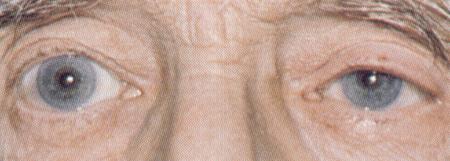Unequal
pupil size/anisocoria
Although an uncommon presentation to the eye casualty,
causes of unequal pupil size ranges from benign to life-threatening conditions.
The history and physical examination are important to determine which patients
needs urgent referrals or routine clinical appointment. The main task of
the attending doctor is to exclude third nerve palsy which requires immediate
referrals as the patient may harbour a cerebral aneurysm.
Presentation:
-
Patients may present with unequal pupils as an incidental
finding which realtived or friends comment on.
-
More seriously are patients who present with sudden onset
unequal pupils associated with headache +/- double vision
Examination:
-
Determine which is the abnormal pupil, as a rule of thumb,
if the abnormal pupil is small immediate referral to the casualty is not
needed. If the abnormal pupil is the small one, the anisocoria tends
to increase in the dark; on the other hand, if the abnormal pupil is the
large one, the anisocoria increases in bright light. A large pupil that
does not respond or responds sluggishly to light is the abnormal pupil.
-
Look for associated signs such as ptosis (third nerve palsy)
and abnormal eye movement (third nerve palsy).
Management:
-
A dilated pupil with ptosis and/or poor eye movement should
be assumed to be caused by third nerve palsy until proven otherwise.
-
Also refer unequal pupils associated with head injury to
the eye casualty within 24 hours
-
Unequal pupils without other associated signs can be referred
to the clinic
 |
Figure 1.
This 70 year-old man presented with a sudden onset left
dilated pupil with ptosis and
ocular palsy. He also suffered from headache. He was
seen at the eye casualty and was
referred to the neurosurgeon. MRI scan with contrast
revealed a posterior communicating
artery aneurysm which was clipped surgically. |
 |
Figure 2
This man had unequal pupils with the left pupil being
smaller. Note the partial ptosis.
The patient had a left Horner's syndrome. He was referred
to the clinic for further
evaluation. In Horner's syndrome, it is important to
exclude pathological process such as
tumour in the pulmonary apex. Once this is excluded,
most cases are benign. |
Back
to the top
|
